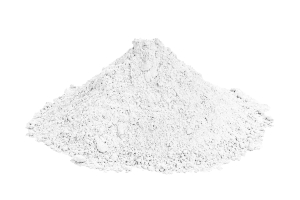Agriculture

PLANT NUTRITION
In agriculture, calcium oxide is used by liming as a soil conditioner in the treatment of acidic soils. Excess soil acidity substantially affects the development of agricultural crops; in contrast, the administration of lime promotes the perfect assimilation of some of the most important nutrients.
Calcium is useful in plant physiology because it intervenes:
- in the processes of cell division and relaxation;
- in tissue strength and pollen formation;
- in the development of the root system.
Magnesium, on the other hand, intervenes:
- in the composition of the chlorophyll molecule;
- in the mechanisms of resistance to water decline.
SOIL STRUCTURE.
The presence of calcium in the soil also exerts a favorable influence on the physical and mechanical properties of the soil, facilitating the phenomena of structural aggregation, improving its permeability to water and allowing the pH value to approach the neutral point.
Through liming of soils, quantitative and qualitative improvements in crops are achieved in most cases, the value of which exceeds the cost of fertilizer and its implementation by several times.
GROWTH OF MICROORGANISMS
The biological preconditions for the presence of useful microorganisms are favorable only in calcium-rich soils. Thus, the addition of lime to soils generates an influence on the growth of bacteria and nitrate formation, detectable by the rapid increase in CO2 formation, nitrogen combination and enzyme formation.
PHENOMENA OF LIME DEFICIENCY
In all agricultural soils, lime results from erosion and continuous crop subtraction. If these losses are not compensated for, lime deficiency phenomena occur in a short time, which mainly occur at the beginning of the growing season, just when nutrient uptake is at its maximum.
LIME ADDITIONS
Lime losses occur, however, not only from subtractions due to the above reasons, but also from certain mineral fertilizers, which exert an acidifying influence in the soil. Therefore, a careful evaluation of the soil itself is needed before carrying out the process. To create or preserve favorable growing conditions for useful plants, lime losses must be replenished quickly.
The quicklime needed for fertilization should be used in granules of 2 to 6 mm because, in this format, it is more easily soluble and therefore more rapidly active.
The period of fertilization with quicklime is not strictly tied to a specific time, but spreading the product before the beginning of the growing season, in early spring, offers a marked improvement in soil structure.
Other areas of lime application in agriculture include: the use of lime water or milk of lime to disinfect cellars and stables after the addition of insecticides; dyeing trunks of orchards to protect plants from sunlight in summer and frost in winter and increase their protection against pest attack; aiding the decomposition and disinfestation of animal carcasses, as well as to recover and reclaim contaminated land.
We highlight that new European regulations are introducing severe restrictions for many active ingredients hitherto used, for which substitution with the use of lime is providing appreciable results.




OSSIDO DI CALCIO E MAGNESIO GRANULARE
Granular calcium magnesium oxide ideal for use in the steel industry
